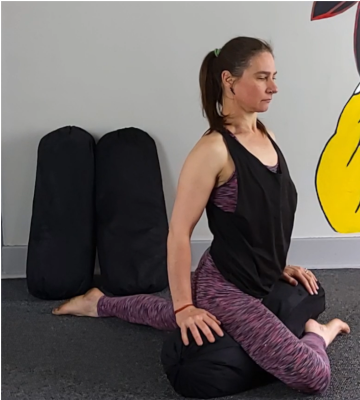

Bolsters can be used for restoration (restorative yoga) and yin yoga in your yoga classes to allow for more ease
when the position is being held for longer. Another great use is to create an easier feeling in the body in deep poses, working towards the full asana.
Here are a few examples of different uses, from passive yin restorative poses to dynamic deeper stretching.
This post is all about hips, and the position we use, I used constantly for a few years to improve the mobility in my lower back. I absolutely love the story
of transformation, and the bolster was the instrument that really helped my body to feel relaxed and get this intensely strong abdominal position. I recommend it strongly.

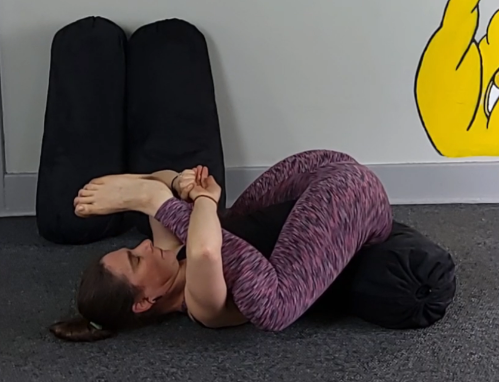
The bolster is placed in line with the centre of gravity, below the pubic bone, under the navel. Think of putting it on the boniest part of the lower back, the fused vertebrae. This is so that the lower back can lengthen down towards the floor
and be stretched out. Opening the back line. Bring the legs up into Blissful baby just the same as before.
The next picture is a variation of Ananda Balasana or can be seen as Supta Baddha Konasana if you will, my teacher's training teacher Durgana taught this one, and never ananda balasana. I remember
how I struggled to get my arms around the shins to grasp underneath the feet. It is such a good pose to work towards Pada Sirsasana, to get your feet behind the neck.
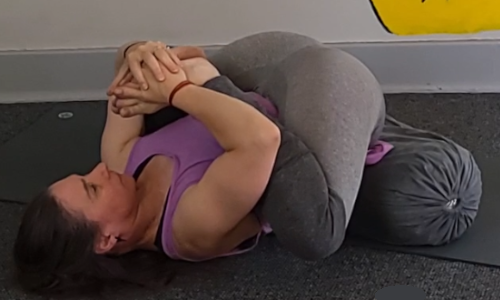
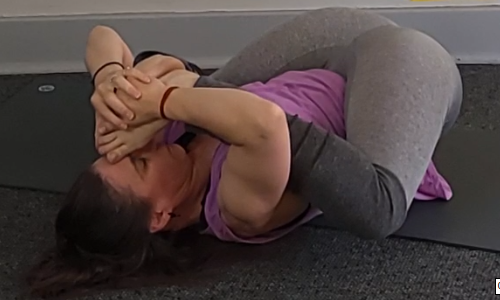
The last variation here can be played with as Ana Forrest also does it, bringing the feet in Baddha Konasasana strongly to the chest, first holding the ankles with your hands, eventually pulling the legs in wrapping the arms around the legs. In other words, one can play with the height of the feet, here shown taking them to the forehead, preparing for dwi pada sirsasana.
There are options here, firstly if you place it under the knee you are again helping the hamstring to not be under sever strain, and more able to feel the lower back
and other parts of the body. It aids in feeling the body coming closer to the leg with the curvature in the back and lifting of the belly.
Placing the bolster under the ankle will cause a deeper stretch for the back of the leg, as some call it the overstretch.
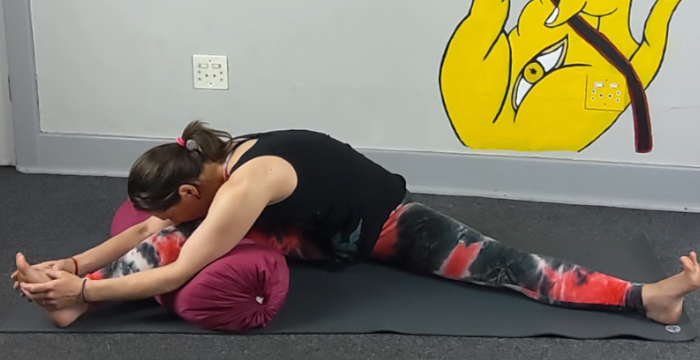

See the picturs below, here we are repeating the same idea with Parsva Upavista Konasana, under the knee gets you closer to the leg, under the ankle creates a deeper stretch on the top side of the body (latissimus dorsi) and the inner thigh.
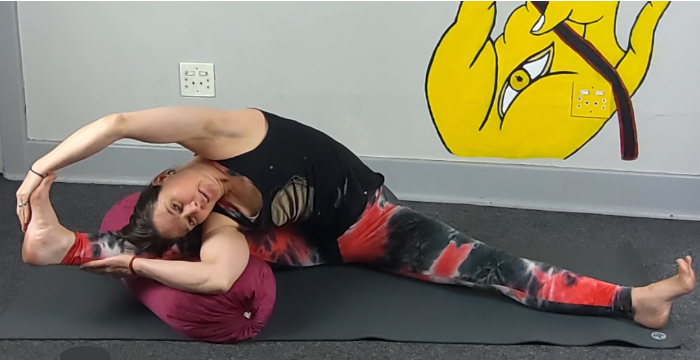
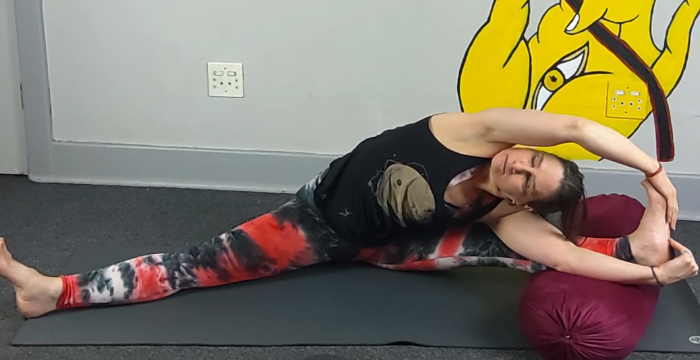
Upavista Konasana done in the following way is brilliant to feel a different hip alignment, specifically helps the pelvis to rotate, which often doesn't do due to weak abdominal muscles or tight back muscles. Or place a bolster under the ankle and stretch forward, this is also extremely nice doing it with two bolsters, one under each ankle. One first thinks it is a wicked pose, but it actually aligns the hips correctly and allows for a correct stretch on the gracilis and inner thighs.
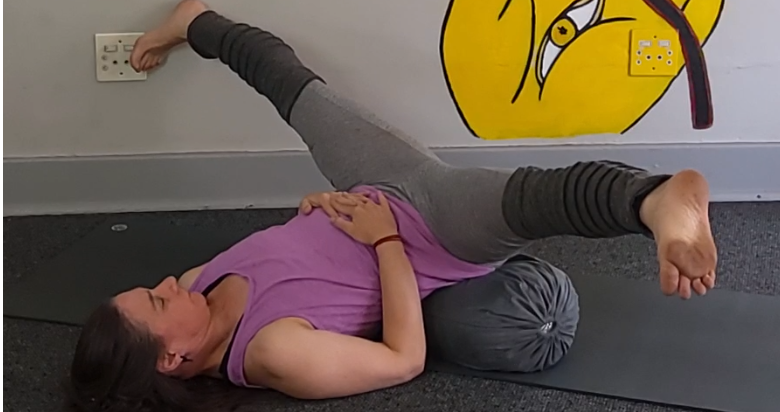
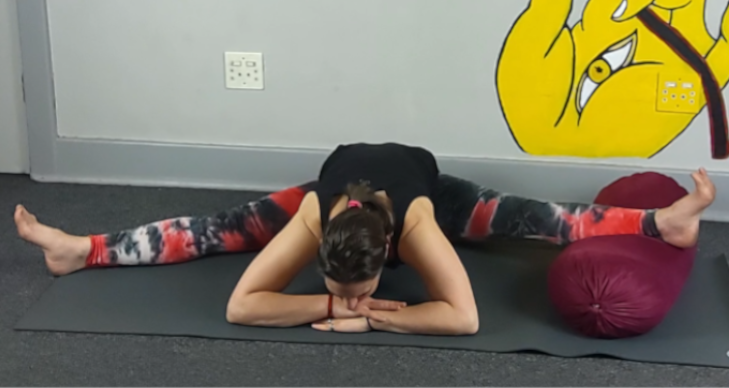
This one is commonly done as the first image, with a yoga strap bound around the lower back and ankles. I have experimented and felt I like the alignment with the bolster raising my feet higher. One can also do it without the bolster under the spine and only raise the feet. Has the same affect as with the bolster under the hips in upavista konasana, helps to rotate and prevent lower back over arching.
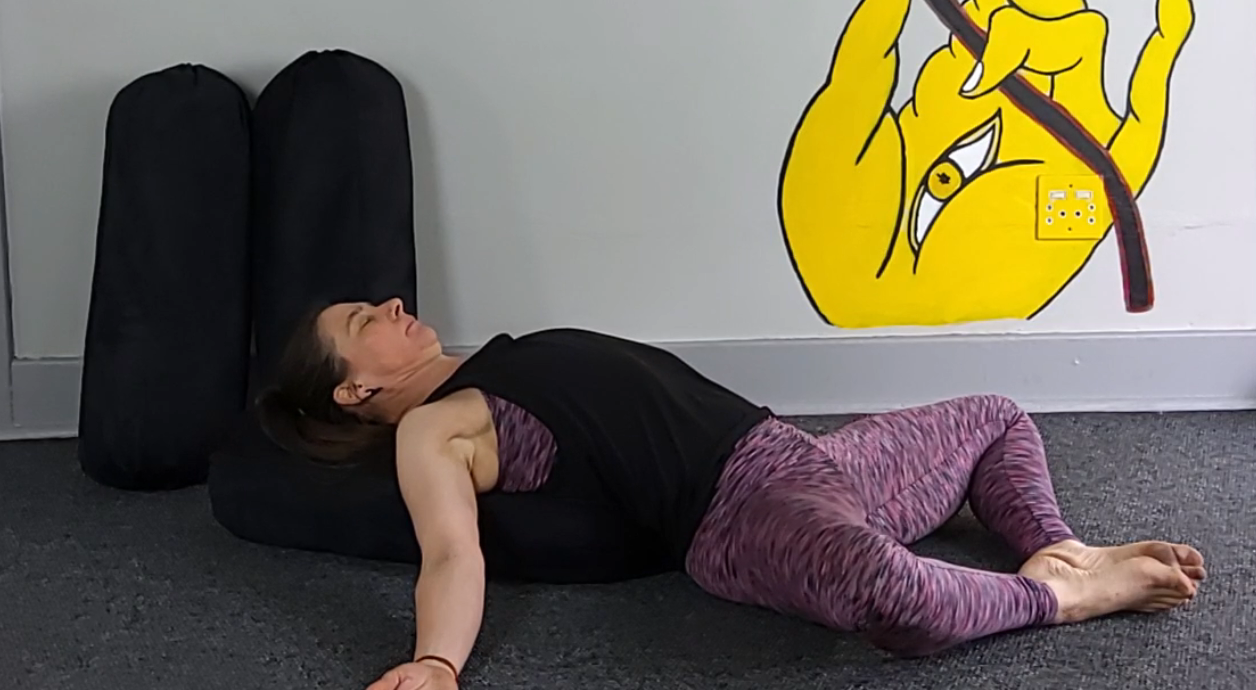
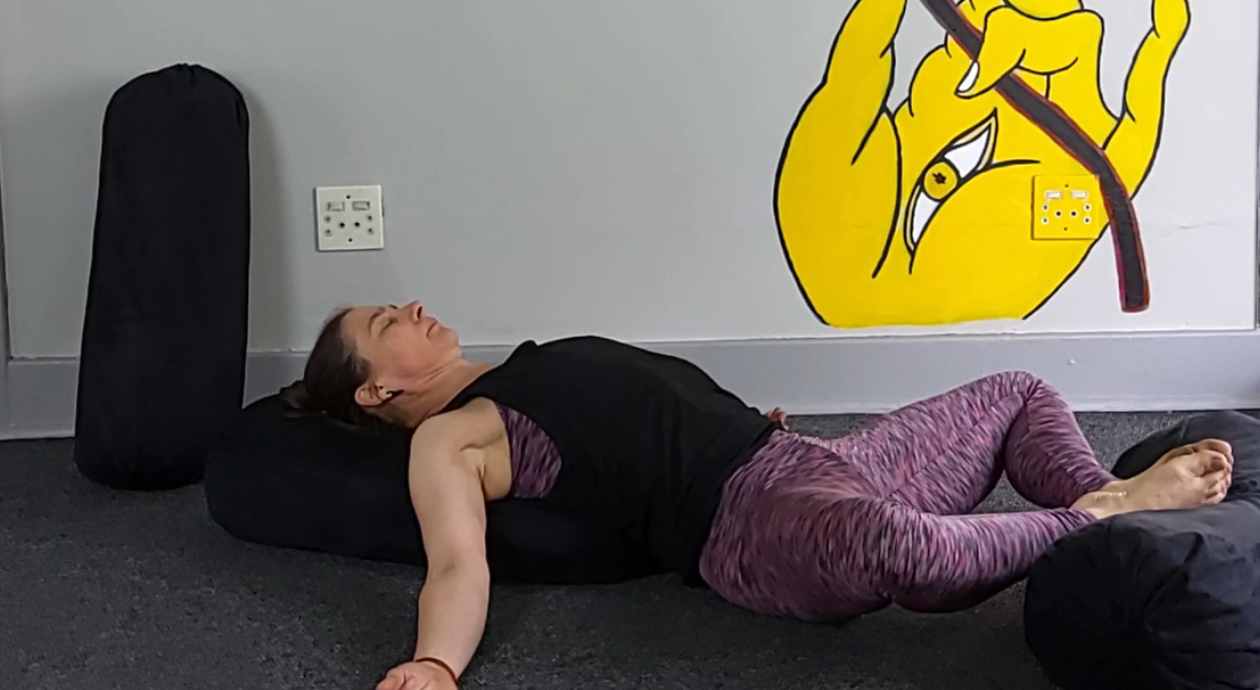
One of my favourite stretches, taught me how to open the front of the body without shortening the back of the body. Initially I could not do this with straight legs, and the feet
would insist on falling outwards. Eventually getting the gluteus medius stronger and the psoas looser the position came. This stretch is lovely on a brick and on the yoga wheel.
also showing how the hips can be opened with Baddha Konasana

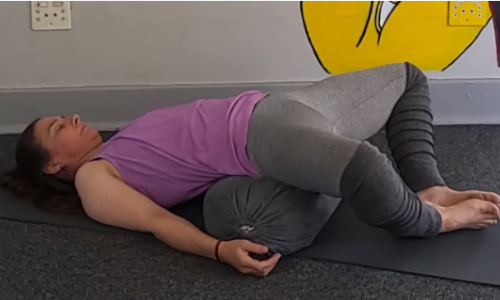
The internal rotation needed for Virasana does not come natural to everybody. Here is a way to be able to do it without being super internally rotated. Helping to release any tightness in the psoas (hip flexor)
, and allowing the thigh to be stretched at a more moderate pace. Supta Virasana is not an easy stretch, sometimes 2 bolsters and even more is needed to allow the student to feel comfortable.
Supta Virasana also amazing to do on the yoga wheel.
Pigeon on the bolster creates quite a different angle for the front leg, it supports the back hip very nicely, raising it higher. If the knee is more tender with the bolster, try to move the Bolster
backwards, so that the knee isn't at a complete right angle. The bolsters gives the feeling of the hips being able to go heavy into the earth and stretch both directions deeply.
One can also add a thigh stretch by lifting the back leg up, as in the backbending post, going towards backbends.
